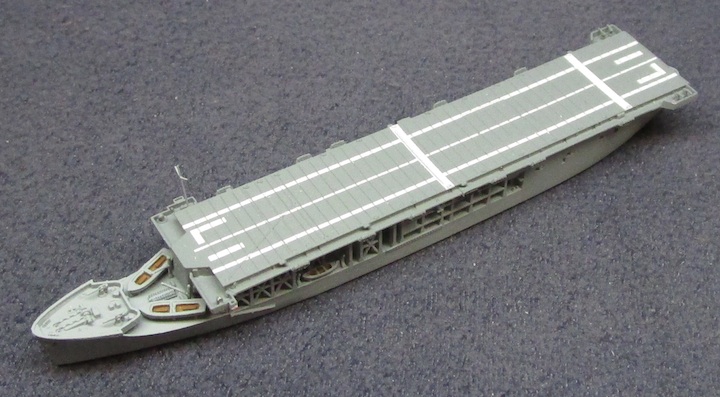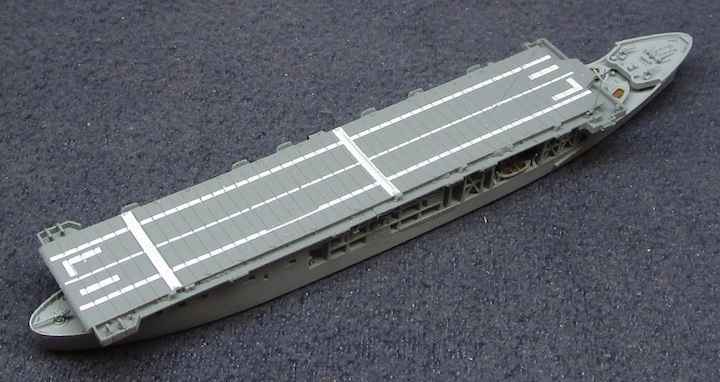U.S.S. Long Island
AVG-1

1941
(Spider Navy SN-2-04)
- Class: Long Island - 1 escort carrier of 1941
- Displacement: 7,886 tons standard; 11,800 tons full load
- Dimensions: 465(wl) 492(oa) x 69.5 (78 max) x 21.5 ft.
- Machinery: four 7-cylinder Busch-Sulzer diesels; 1-shaft 8,500bhp = 16.5 knots
- Armament: 1-5in/51, 2-3in/50 AA guns, 4-0.5in MG
- Aircraft: 21
- Complement: 970
- Builder: Sun Shipbuilding
- Keel Laid: 7 Jul 1939
- Launched: 11 Jan 1940
- Commissioned: 3 Jun 1941
- Decommissioned: 26 Mar 1946
- Notes: The first of a long line of US escort carriers, Long Island was converted from the diesel-powered C3 cargo ship Mormacmail, acquired 6 Mar 1941. Converted at Newport News. Intended first as an aircraft transport, she was initially designated AVG-1, then ACV-1 from 20 Aug 1942, and eventually CVE-1 from 13 Jul 1943. She retained her bridge structure forward below the flight deck. Initially she carried 6 scout and 10 observation aircraft, with just one elevator and a short hangar aft; in late 1941 her flight deck was extended forward an extra 77 feet and 20mm AA replaced the 0.5in MG. Similar conversions for British use followed, but the US Navy considered her too slow so later American conversions were steam-powered vessels; both British and American versions added small islands.
In 1941 Long Island carried VS-201, the Navy's first "composite squadron" specifically formed for service on her. She operated out of Norfolk, acting as a test bed for future conversions and qualifying pilots. Her initial wartime service was escorting a convoy to Newfoundland, before transferring to the Pacific in May 1942.
On 20 Aug 1942 she launched 19 Wildcats of VMF-223 and 12 Dauntless dive bombers of VMSB-232 from SE of San Cristobal for Guadalcanal - the first combat aircraft for the newly seized island. She returned to the New Hebrides to receive more aircraft delivered by aircraft ferry Kitty Hawk for forwarding to Guadalcanal. Returning to the west coast, she trained pilots for a year off San Diego. During 1944-45 she primarily transported aircraft west, and when the war ended, made Magic Carpet trips hauling troops back stateside. She received one battle star for her WWII service.
Postwar she was sold for scrapping, but was purchased by the Canada-Europe Line and converted for merchant service as Nelly in 1948-49. Sold to the University of the Seven Seas 1953, renamed Seven Seas (German flag) and converted to a schoolship. Hulked at Rotterdam as a student hostel 1966, and then as a hostel for shipyard workers. Scrapped at Ghent 1977.



 Up
Up
 Next
Next





 Up
Up
 Next
Next